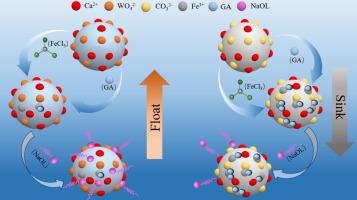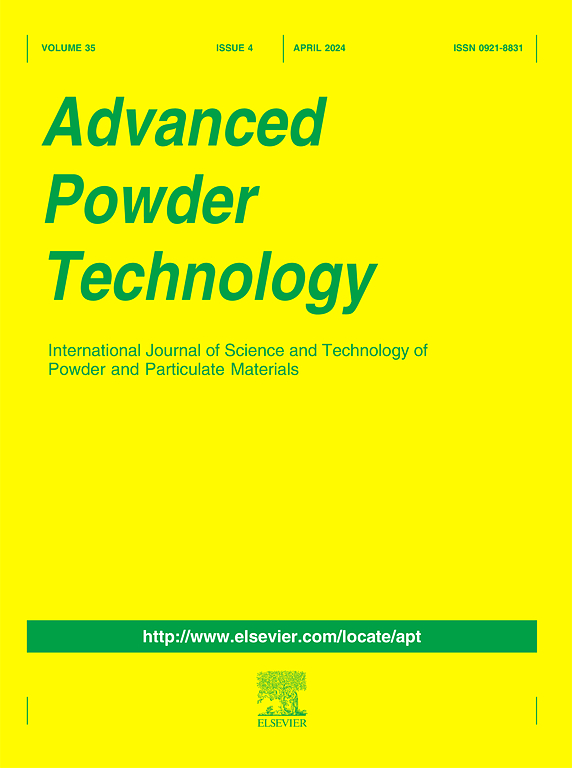Metal ions modified small molecule organic inhibitor to achieve efficient flotation separation of scheelite from calcite
Abstract
The flotation separation of scheelite from calcite is challenging due to their similar surface and solution chemistry properties, necessitating the use of efficient inhibitors. This study explored the mixed depressant of ferric ion and gallic acid for enhancing separation efficiency of scheelite and calcite. The flotation performance of scheelite and calcite was evaluated with varying ferric ion to gallic acid molar ratio (1:5), concentrations (2 × 10-5 mol/L and 1 × 10-4 mol/L), and a NaOL dosage of 1 × 10-4 mol/L. The results indicated that scheelite achieved a recovery of 81 % while calcite recovery was 8.3 %. The mixed ore experiment proved that the addition of mixed depressant increased the grade of scheelite by 21.48 % (from 37.08 % to 58.56 %) compared with that of only the addition of the collector. The experiment showed that the mixed depressant had a good inhibition effect on calcite. Surface characterization analysis indicated that the mixed depressant exhibited a weak depressive effect on scheelite but effectively depressed calcite by enhancing gallic acid adsorption through iron ions promotion of calcite surfaces, thereby inhibiting sodium oleate enrichment. Therefore, this study confirmed the mixed depressant was an effective depressant for calcite flotation in scheelite flotation separation.


 求助内容:
求助内容: 应助结果提醒方式:
应助结果提醒方式:


